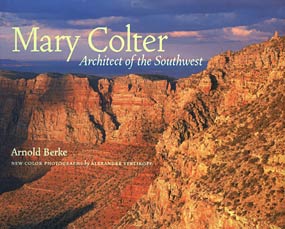Who Was Mary Colter?
THE BEST KNOWN UNKNOWN ARCHITECT
A benefit for Friends of 1800 and SF Heritage celebrating the return to the Fallon site
October 25, 2002 • GLBT Community Center, 1800 Market, San Francsico
Keynote Speaker: Arnold Berke
American architect and designer, Mary Colter (1869-1958) represents the5challenges of an early 20th century woman architect in a male dominated profession. She transformed our perceptions of contextual national park places and sparked a keen interest in the East Coast travel lure to the West.
Her remarkable career was the subject of a Friends' lecture event
on Friday, October 25, with a keynote presentation from Arnold
Berke, whose book, Mary Colter, Architect
of the Southwest, examines her life and work. Mr. Berke,
writer and senior editor of Preservation magazine, will speak
about the life of this pioneering woman architect and explain
how she changed the direction of the architectural styles in the
Southwest.
A graduate from the California School of Design in San Francisco
(now the San Francisco Art Institute), Mary Colter departed from
traditional European revival works of the time and popularized
Native American and Hispanic indigenous design forms and contextual
structures that blended harmoniously into the South-Western landscape.
Mary Colter was an employee of the Fred Harvey Company from 1910 to 1948. Her main task was the design and decoration of Harvey hotels and restaurants along the Santa Fe Railway. A versatile designer who integrated authentic regional elements into strong themes, Colter was responsible for famous hotels such as El Navajo in Gallup, New Mexico; La Posada in Winslow, Arizona; and Painted in Painted Desert, Arizona.
Her rustic-styled buildings at the Grand Canyon, including the Hopi House, Bright Angel Lodge, and others, are admired by almost five million visitors a year and have influenced National Park Service development. Mary Colter's style became known as National Park Service Rustic.
The event included a reception and book signing after Mr. Berke's presentation. Mary Colter: Architect of the Southwest is available here.
→ Read Alan Martinez' introductory remarks to Alan Berke's presention.


















